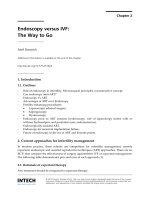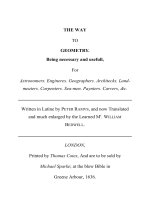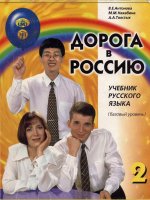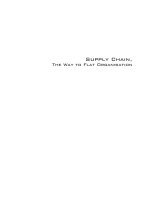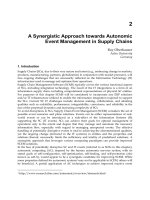THE WAY TO TRADE potx
Bạn đang xem bản rút gọn của tài liệu. Xem và tải ngay bản đầy đủ của tài liệu tại đây (2.44 MB, 304 trang )
AVALANCHE DIRECT LIMITED
Head Office:
The Media Centre
7 Northumberland Street
Huddersfield, HD1 1RL
England
Tel: +44 (0)1484 483119
Fax: +44 (0) 1484 483120
Web: www.the-way-to-trade.com
First published in Great Britain 1999
Foreword © Alexander Elder 1999
© Financial Times Professional Limited 1999
The right of John Piper to be identified as author
of this Work has been asserted by him in accordance with
the Copyright, Designs, and Patents Act 1988.
All rights reserved; no part of this publication may be reproduced,
stored in a retrieval system, or transmitted in any form or by any means,
electronic, mechanical, photocopying, recording, or otherwise without either
the prior written permission of the Publishers or a licence permitting restricted
copying in the United Kingdom issued by the Copyright Licensing Agency Ltd,
90 Tottenham Court Road, London W1P 0LP. This book may not be lent,
resold, hired out or otherwise disposed of by way of trade in any form
of binding or cover other than that in which it is published,
without the prior consent of the Publishers.
The work entitled The Way to Trade: Discover Your Successful
Trading Personality, has been made available to Avalanche Direct Limited
by Pearson Limited in electronic form subject to the condition that the work
nor any part of the work may be copied, printed, downloaded, saved or
transferred to any other computer file, or distributed on a network
without Avalanche Direct Limited’s prior permission.
Please help to fight digital theft.
This book is a legal copy if ordered through:
www.the-way-to-trade.com
If you did not order it from this web-site,
please send an e-mail to:
THE WAY
TO TRADE
Discover your
successful
trading personality
JOHN PIPER
THE WAY
TO TRADE
John Piper has been involved with markets since his early
twenties. In the late 1980s he started to trade markets full time
and did so right through the Crash of 1987 – an experience
that stands him in good stead for markets today. For over a
decade he has been the editor of The Technical Trader, the
leading newsletter in the UK for those who trade any of the
popular markets worldwide. His articles bring a fine edge of
analysis to markets and how they work. He trades full time,
making consistent profits, and now manages money for
selected clients at Berkeley Futures Limited, a firm regulated
by the SFA. He lives in Dorking, Surrey and in Massa, Italy.
About the Author
This book is dedicated to
all those who are struggling with markets, whoever and
wherever they may be.
Why you need this book xiii
Foreword by Dr Alexander Elder xvii
Introduction xix
Acknowledgements xxi
Section 1
THE UNDERLYING PHILOSOPHY
1 An introduction to the Trading Pyramid
3
The Trading Pyramid 4
Summary 9
2 The evolution of a trader and the 55 steps 11
The three stages 12
The 55 steps (a personal journey to success) 15
Summary 19
3 The human brain 21
Structure of the brain 22
Trading chaos 26
Summary 26
4 You – the first level of the pyramid and why 29
The trading experience 30
Summary 33
5 Commitment 35
The nature of the market 35
Market Profile 37
Summary 39
6 Discipline 41
Discipline and the Trading Pyramid 42
vii
CONTENTS
System parameters 43
Summary 45
7 Money Management 47
Using Money Management 48
Position size 49
Monitoring position 50
Summary 51
8 Risk control 53
Risk inherent in the vehicle 54
Risk inherent in the market 55
Other forms of risk 55
Summary 57
9 The three simple rules (or trading secrets) 59
The trading secrets 60
Following the rules 61
Summary 66
10 System parameters – the thinking behind system design 67
Buying options 68
Writing options 68
Futures 68
Designing a system 69
Summary 75
11 System parameters – simple trading rules and the
human brain
77
Systems 78
The human brain 79
Summary 81
12 Developing your methodology 83
Time frame 84
Trading type 84
Analysis type 85
Money Management (MM) 85
Risk control (RC) 87
Entry methodology (EM) 87
Contents
viii
Exit methodology (ExM) 87
Interview with an institutional trader 88
Summary 93
13 Operation 95
The set-up 96
Problems with operation 97
Summary 99
14 The whole structure = profit/loss 101
Summary 103
15 Stops and acceptance 105
Are stops necessary? 105
Stop approaches 106
Acceptance 107
Summary 110
16 A trading coach? 111
The benefits of working with a coach 111
Adrienne Toghraie 113
First steps 114
Summary 115
Section 2
MARKET TECHNIQUES AND METHODOLOGIES
17 Some points of principle
119
More general points 120
Low risk trading opportunities 122
Trading tips 123
Summary 125
18 Market Profile and Minus Development 127
Market Profile 127
Minus Development 130
Value 130
Other concepts 132
TTT article 132
Trading tips with Market Profile 136
Summary 137
Contents
ix
19 Futures and options 139
Stocks 139
Futures 140
Options 141
Summary 149
20 Spiky action 151
Trading Trend 151
Types of spike 152
Summary 153
21 An options strategy 155
The options strategy – principle 155
The options strategy – operation 157
Options – the hedging strategy 158
Summary 163
22 A number of futures strategies 165
Gas opens – code word: goose 166
Failed breakthroughs – code word: goat 169
Failed re-tests – code word: snake 172
Square congestion – code word: box 172
Key levels – code word: piano 173
Eliott fives – code word: illusion 174
Aborted patterns – code word: platypus 175
Trend following – code word: horse 176
Corrective action 177
Other systemized approaches 178
Summary 179
23 Systems 181
Stops 182
One secret to success 183
A few additional comments 183
My own trading 183
My trading rules 184
Risk warning/disclaimer 185
Contents
x
It doesn’t end here 186
Summary 187
24 Trading systems and when to use them 189
Trading systems 189
How to make a fortune trading futures 191
Summary 193
25 Market myths 195
Indicators and market techniques 195
News 196
Zero sum? Don’t you believe it! 196
Systems 197
Summary 197
26 The 10-step approach to futures and options trading 199
Step 1: Where am I now? 199
Step 2: Where do I want to go? 200
Step 3: Survival (1) 200
Step 4: Survival (2) 201
Step 5: Methodologies 201
Step 6: Theory 202
Step 7: Practice 203
Step 8: Fear 203
Step 9: Running profits 204
Step 10: Expertise 204
The consultancy service 204
Summary 205
Section 3
A CHART TUTORIAL
27 Low risk trading opportunities on U.S. and U.K. markets
209
Section 4
AN OPTIONS TRADING CAMPAIGN
28 A war of attrition
221
Epilogue 231
Contents
xi
APPENDICES
1 Follow-up Services 239
2 The Troubled Trader by Tony Plummer, MSTA 241
3 Recommended reading 255
4 Trading and psychology questionnaire 257
5 Is Elliott addictive? 269
Index 275
Contents
xii
If you are an individual trader, whether a novice or experienced, you will
benefit from reading this book because:
1 Trading the futures and options markets leads to a greater compound-
ing of wealth than any other method available. Billions have been made
in days on many occasions, and will be made again. Nothing else comes
close.
2 It is possible to make money in the markets consistently. It is possible to
beat the market. The author, John Piper, among many others, has done
it. To do the same you need to follow a proven methodology which suits
your personality. This book explains how.
3 This book also sets out a number of proven methodologies, giving you
a head start in selecting the one which will work for you.
4 But it also goes a lot further. John Piper wrote this book because he had
never come across a book which deals with the whole issue of trading.
There are many books which deal with market analysis, and technical
analysis techniques. There are many books which deal with psychology.
There are books which deal with money management and all manner of
other subjects, some even cover a range of topics. But no other book
covers it all, from a successful philosophy of trading, through all the psy-
chology, into the methodologies, the operation thereof, and the end
result.
5 It is rare to find a book which appreciates that it is no good doing it “how I
say.” We each have to find our own route to success. This book spells out
why that is, and how to do it. That is what The Way to Trade is all about.
6 The futures and options markets offer the biggest potential for growth,
far more than is offered by stock markets. The people who really make
it big do so in these markets. Perhaps more importantly you can make
money whether markets go up or down. In coming years this may be
important.
xiii
WHY YOU NEED THIS BOOK
Fascinated? You should be, and anyone who is into money, and wants lots
more of it should check out this book. Rich or poor, working or retired, there
is something for everyone in these pages.
Why this book is unique
Trading is a life experience, it is not like any other business. As you become
a better trader, you become a better person. But as you evolve it is difficult
to look back at where you were. I believe this is why there are no other
books which cover all the ground. Those traders who do make it often “for-
get” how they got there, not surprisingly, as a lot of the skills become sub-
conscious.
However, John has always combined his trading with writing about
markets. This has given him a fairly unique insight and forced him to
express personal matters which other traders just assume. It has also
forced him to more carefully examine the precise process involved in
becoming a successful trader. It is solely through this process that John
Piper “discovered” the Trading Pyramid. This is the first attempt to cre-
ate a model for trading success and traders will find it immensely useful.
So not only does this book take the trader right through from the begin-
ning to the end result (trading profits, lots of them!) it also provides a frame-
work against which to work.
There are no right or wrong ways to trade
The only thing that counts is the result. This book sets out a range of para-
meters within which to build the system that suits you. The beauty of trad-
ing is that it becomes an expression of your own personality. Good traders
don’t do, they simply are. But to become a good trader you have got to find
the approach which will work for you. This book, and the follow-up services
that are available with it, will help you do just that.
Follow your own path
But to get there you must follow your own path. It is no good following the
trades other people do. Certainly you need help to learn this business,
which is what this book is all about. You need a mentor, but you do not
need gurus who tell you how to trade. You will only win by trading your way.
Indeed Frank Sinatra’s big hit “My Way” is an excellent anthem for any
Why you need this book
xiv
trader. Taking that step to do it by yourself is one many traders find the
most difficult, but it is essential.
If you don’t want to do it your way then you are better off giving your
money to another trader, like John Piper, so that he can trade it for you. But
make sure you check out the track record and risk profile first.
Why you need this book
xv
xvii
Successful trading is based on 3 Ms – Mind, Method, Money.
Mind refers to your trading psychology. You must follow certain psycho-
logical rules that lead to winning when faithfully applied and avoid pitfalls
that become death traps for most losers.
Method refers to how you find your trades – how you decide what to buy
or sell. Each trader needs a method for choosing specific stocks, options,
or futures as well as rules for “pulling the trigger” – deciding exactly when
to buy and sell.
Money refers to how you manage your trading capital. You may have a
brilliant trading system, but if your Money Management is poor, you are
guaranteed to lose money. A single unlucky trade can destroy your account
if Money Management is not in place.
Trading psychology, trading method, and Money Management – people
sometimes ask me which of the three is most important. I answer – imag-
ine sitting on a three-legged stool. It is pretty stable, but try getting com-
fortable sitting on that stool after taking away any one of its three legs. Now
please tell me which of the three legs is most important?
Traders go through three stages of development. When people first
approach the markets, they usually focus on the method. Most of them do
not survive this stage. They are too inexperienced and do not have anyone
who can tell them how to stay out of trouble. No amount of optimized mov-
ing averages or fine-tuned trendlines will keep them alive in the markets.
Those who survive that stage acquire a greater sense of confidence.
They acquire a method of selecting what to trade and the tools for analyz-
ing markets and deciding when to buy or sell. Some become quite profi-
cient in technical analysis, market indicators and systems, using
computers to search on-line databases. Then the smarter survivors start
asking themselves: if I am so good, how come I am making so little money?
How come my account is up 20 per cent one month, and down 20 per cent
FOREWORD
by Dr Alexander Elder
Financial Trading Inc.
or worse the next month? I clearly know something about the markets –
why can’t I hold on to what I make?
Traders at the second stage tend to grab profits and buy something
before their money evaporates in a series of bad trades. Then one day they
look in a mirror and realize that the biggest obstacle to winning is the per-
son they see in it. Impulsive and undisciplined trades with no protective
stops lead to losses. A trader who survives the second stage comes to rec-
ognize that his or her personality, with all its complexes, quirks, and faults
is just as much a trading tool as the computer.
Traders who survived that stage become more relaxed, quieter, not
jumpy in the markets. They are now in the third stage – focusing on man-
aging money in their trading accounts. Their trading system is in place,
they are at peace with themselves, and they spend more and more time
thinking how to allocate their trading capital in order to reduce overall risks.
The concept of the 3 M’s comes from my book Trading for a Living which
has become an international bestseller. I met John Piper six years ago and
enjoyed watching him grow and mature as a trader and a teacher of
traders. It gives me pleasure to see that we share a number of ideas about
markets, such as the 2% Rule, the concept of the market as a manifesta-
tion of human psychology, buying below value and selling above value, the
market as a minus-sum game.
In the book you are about to read John Piper takes you beyond theory in
a very useful Chart Tutorial. He invites you to follow him through a series of
trades, commenting on his actions along the way. He provides an essen-
tial lesson that most beginners never get.
In The Way to Trade John Piper mentions that he has been managing
money profitably for the past year and I know that he has been trading for
many years before that. To get really serious money under management in
the US requires a five year audited track record. I wish John success in
continuing to make consistent profits and his readers a captivating and
profitable journey into the financial markets.
Dr Alexander Elder
New York – Moscow
Foreword
xviii
xix
I
have been trading futures and options markets for over a decade. I
now manage money and make good consistent profits. So what I have
to say about markets has been forged in the fire of market action itself. I
have suffered the highs and the lows which all traders experience on the
road to success.
This book is unique in that it takes the reader right through the trad-
ing process and it also uses a model, the trading pyramid, which
explains the process and the inter-relation between the component parts.
The key component for successful trading is the underlying philoso-
phy of trading and this is what so many books and seminars ignore.
There is so much written and spoken about analysis but that is such a
small part of the game. Good trading is not a question of doing, it is a ques-
tion of being. This book is dedicated to those who want to become good
traders. Analysis and trading technique are useless to those who have not gone
through this process.
Having dealt with the underlying philosophy, we then move onto
specific trading techniques and the underlying analysis which builds
those techniques. I do not believe that analysis is used correctly by the
vast majority of those who risk capital in worldwide markets. Analysis
is not for use on markets, it is solely to devise your methodology/
approach to the market. You must devise this methodology and then
use it. Thus you become an expert in its application and then the money
flows your way.
But you must have your own methodology; it is no good being spoon
fed something by the currently “hot” guru. This is very unlikely to suit
your trading personality. This book tells you how to develop your own
methodology and explains the feedback process within the pyramid
that will make it work for you.
Most people lose in the markets for one simple reason – they trade emotion-
ally. When traders understand the problem they improve by becoming
mechanical. This is a big improvement but it is still not enough. To be
INTRODUCTION
Introduction
xx
truly successful you have to become intuitive, and this simply means
you become an expert in what you do – something you achieve through
experience. It is this path I chart in this book. I think you will enjoy it.
Don’t accept anything in this book at face value. It is an essential part
of a trader’s development to carefully consider all aspects of the market
and his individual approach to it. Some of the statements made in this
book are deliberately provocative and designed to ferment that process.
So don’t accept anything, think about it, draw your own conclusions,
and thus create your own useful beliefs about markets and your method-
ology. The key word is ‘useful’; your beliefs and techniques must prove
their usefulness in producing lots of lovely profits.
Finally I must say that there are various lessons in trading which
become particularly relevant at particular times during our progress
towards success. For this reason you may find that parts of this book do
not seem relevant to you the first time you read it. But they may well do
so on a subsequent reading. This is a book which may repay frequent
readings!
John Piper
(Editor’s note: John welcomes comments on this book and contact details appear
on page 240.)
xxi
Many, many people have gone into the making of this book. Frequently
I speak to a consultancy client or discuss a point with an attendee at one
of my seminars and gain insight which I have tried to distill into these
pages.
I am also grateful to the authors of the many works on markets and
trading which I have read. The key works are listed in Appendix 3, but
I must single out Tony Plummer whose article “The Troubled Trader”
appears in Appendix 2. This article makes it clear why we find trading
a tough proposition.
In my own trading career I owe a great deal to Adrienne Toghraie for
her help with my psychology, and to Adam Seccombe who is, even now,
helping bring in further sums for me to manage.
Thank you to those who took the trouble to read the first draft of this
book, especially Dr Alexander Elder who was kind enough to also write
the Foreword.
Thank you, also, to the team at Financial Times Pitman Publishing
who are responsible for the work you hold in your hands, particularly
Richard Stagg, Iain Campbell, Elizabeth Truran and Heather Serjeant.
Thanks also to my family who bore the brunt of the difficult years
before I learnt how to make money consistently.
Finally I must thank Karen for all her help with the book, not the least
for soothing my troubled brow when I most needed it.
ACKNOWLEDGEMENTS
THE UNDERLYING
PHILOSOPHY
W
hen we enter the trading arena we enter an environment unlike any-
where else. The rules we have lived by in the normal outside world
no longer apply and, indeed, will cause us loss. Our very motivation can
be our own worst enemy as we seek to extract money from the markets.
To succeed in the markets we need to put in place an entire structure,
as we have put in place an entire structure (personality) in the outside
world. The Trading Pyramid is just such a structure. But before I begin
to explain how it works let me give you two examples of why our nor-
mal behavior and motivations are not going to help us in the markets.
Many people enter the markets because they have had a successful
career or business life elsewhere. At this point they may feel a little
bored with life and seek a new challenge. This is very normal, and the
kind of stimulus all of us have felt at one time or another. But think
about this for a minute. Such an individual, starting to trade, will prob-
ably, like many other traders, trade in a fairly haphazard manner to start
with. I term such trading “emotional,” because whatever method
traders may think they are using, the ultimate decision is more usually
an emotional one. I will explain this in more detail later in this book. So
the overall rationale can be described as “the person is bored and wants
to trade.” So what happens the next time boredom sets in? Once able to
trade, it is very likely that a person will make the emotional decision to
do just that when bored. This timing is unlikely to correspond with a
low risk trading opportunity; I will also be talking a lot about those later
in this book.
So the first question traders must ask themselves is “Why do I trade?”
The answer to that simple question may save you a fortune.
3
Chapter 1
AN INTRODUCTION TO THE
TRADING PYRAMID
